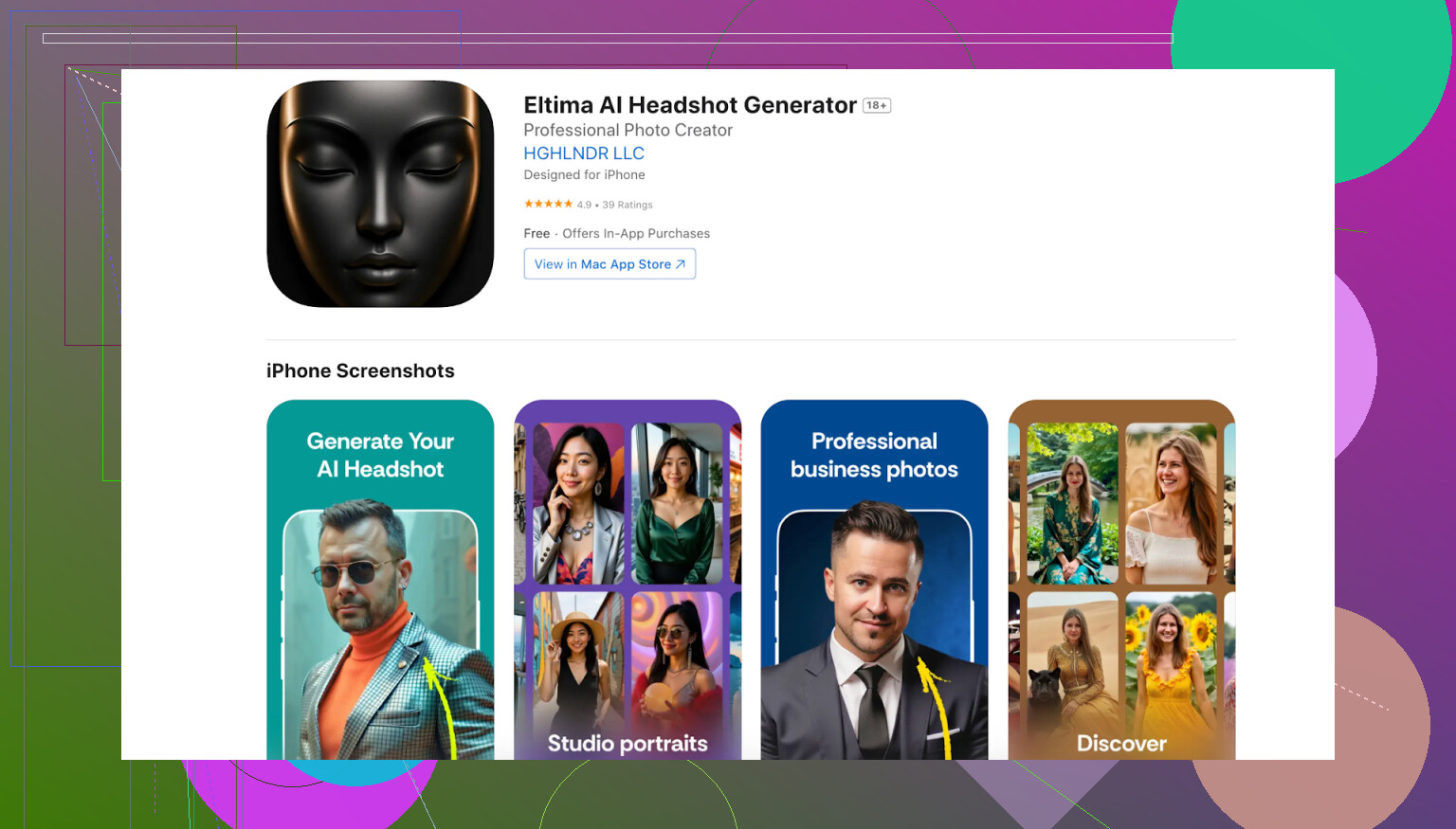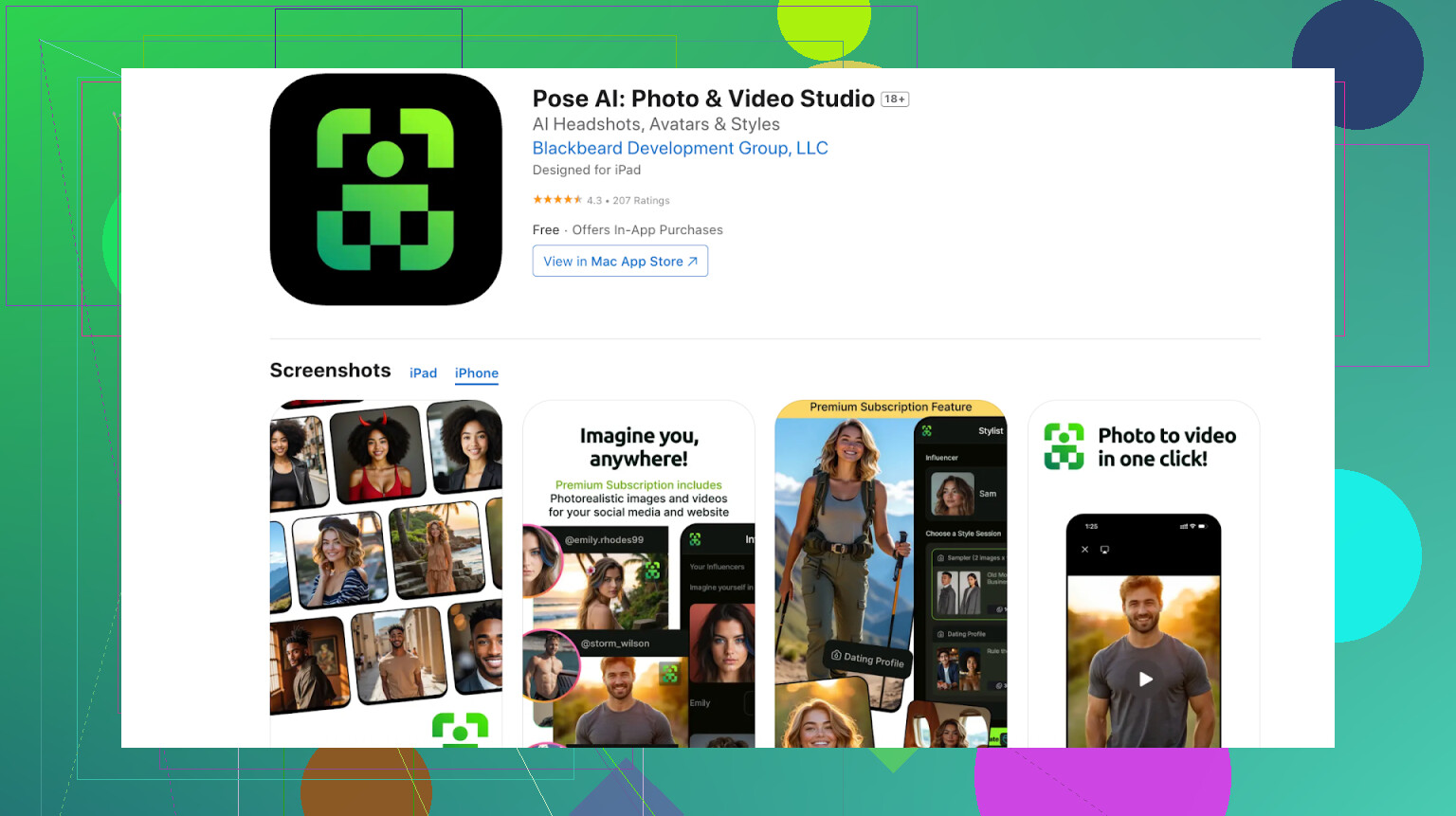I’ve been experimenting with AI image generators, but the results look artificial and not very lifelike. I need advice or tips on techniques, prompts, or settings to achieve realistic AI images for my projects. Anyone with experience willing to share what works best?
Realistic AI Portraits: My Trials, Errors, and Go-To Apps
So, I’ve been down the AI image rabbit hole more times than I care to admit. Every app swears it’ll turn your face into magic, but let’s be real—not all of them can deliver the goods. I came across a couple that actually do what they promise: Eltima AI Headshot Generator (seriously, if you need pro-level headshots for LinkedIn or your portfolio) and Pose AI: Photo & Video Studio, which adds a bit of spice for creative and artsy stuff.
Headshots That Don’t Look Like Deepfakes
I’m not going to sugarcoat it: I’ve spent evenings with some apps that made me look like an anime cosplayer, even when I specifically asked for “business casual.” But Eltima AI? Actually does justice to your face. Here’s my usual routine (after deleting failed attempts from other apps):
- Gather up 8–12 clearer-than-your-Instagram-filter selfies. Not kidding—the funkier or lower-res the shot, the worse the results. Different angles help too.
- Let Eltima AI process your mug. It churns through what you give it and spits out a freakishly convincing “AI profile” version of you.
- Templates! Customize with Templates.
- Pick a vibe and hit Generate. Wait a few moments, and wham! Multiple versions pop up. Some look like you just left a photo studio.
Getting Creative: Pose AI’s Editorial Playground
Now, if you’re tired of “just another plain headshot”—Pose AI jumps in for more visual drama. This is the one you show your friends, not grandma (unless grandma is into AI art).
- Start off with your favorite selfie
- Pick something: There are templates for the pose, the outfit, even the whole photoshoot scenario. Always wanted to see yourself as a rockstar or magazine model? This is your jam.
- Sit back and let the AI flex its creative muscles. You’ll get a pile of stylized options, some downright impressive, others…well, keep those for your meme stash.
- Cherry-pick the images that actually look like you. Not every generated pic is a winner, but some are shockingly close to the real deal.
Quick Thoughts
Using these apps and following these steps, you can easily create realistic AI photos that fit a variety of needs. Whether you’re polishing your social media feed with stylish portraits, upgrading your professional profile with clean and career-ready headshots, or experimenting with creative projects that require unique visuals, AI photo generators make the process fast and effortless. Instead of spending hours on photoshoots or editing, you can simply upload a few selfies, choose from dozens of templates — from professional to casual to fashion-forward — and instantly get results that look natural, polished, and ready to share.
I see what @mikeappsreviewer is saying about feeding the apps higher-quality source pics and using headshot generators for clean outputs. But honestly, the app isn’t always the bottleneck—that “uncanny valley” look is usually about the prompts, not just the platform. If you’re going for realism in AI-generated images and not just selfie upgrades, you need to master a few crafty tricks:
- Prompt Engineering: Be hyper-specific. Instead of “make a man smiling,” try “photograph of a 30-year-old Caucasian man, natural smile, shallow depth of field, soft indoor lighting, Canon 5D mark IV, ultra-realistic.” Technical camera stuff in prompts helps, weirdly.
- Reference Real Photography: Add cues like “candid shot, not looking at camera, natural posture, subtle skin textures, pores visible”—small details cue the AI to avoid that plasticky look.
- Lighting is Everything: Always mention the lighting type. “Golden hour ambient light,” “soft shadows,” or “diffused window light”—results get surprisingly lifelike.
- Skin Texture and Flaws: Unless you want a literal Vogue cover, emphasize “slight imperfections, visible pores, subtle wrinkles,” etc. Avoid words like “perfect” or “flawless” unless you want doll-people.
- Post-Processing: Honestly? Take the output, then run it through a photo editing app (Lightroom, Snapseed). Sharpen, add a tiny bit of grain, and play with contrast. Sometimes this “dirties up” the skin and makes it 10x more plausible.
- Composition & Background: Ask for background blur (bokeh) or specify “realistic indoor background, slightly out of focus”—the AI won’t always default to something non-distracting.
Not to ruffle feathers (lookin’ at you, @mikeappsreviewer and @chasseurdetoiles), but sometimes the supposed “magic app” isn’t the magic bullet everyone needs for realism. Their tips are solid (yes, prompts and camera jargon help), but if you REALLY want AI portraits to fool your friends—or, let’s be honest, HR—stop focusing only on lighting or templates.
Here’s what everyone keeps missing: AI models are still much, MUCH better at generating realistic faces when the training data is close to your own data. Meaning: if the app wants 8-12 selfies? Consider adding even more varieties (messy hair, glasses, tired eyes, weird lighting—all the “bad selfie” stuff, ironically, helps the AI learn normalcy). Most folks cherry-pick the “best” pics. Don’t. Feed the beast all the awkward ones, too.
Next—don’t trust the output at face value. Even Eltima AI Headshot Generator, for all its polish, sometimes spits out results that are a little “too” smooth. I actually do a second pass: plop the AI image into a classic photo editing app, nudge the textures, maybe add noise or minor skin redness, even a flyaway hair here or there. Post-AI tweaks make everything feel less clone-army and more human.
One more: Use reference images of REAL photos you admire (from Unsplash or random Insta photographers) and paste ‘em in as styles, if your app allows. AI loves having “goals” to imitate.
Last thunk—don’t overshoot on perfection. The uncanny valley often comes from chasing the flawlessly-filmed, hyperreal look that hardly exists in real life. A bit of mess, a random eyebrow hair askew, imperfect background lighting: those nuances signal authentic, not synthetic.
Or, y’know… just grow a mustache. Even AI can’t fake mustache randomness (yet).

